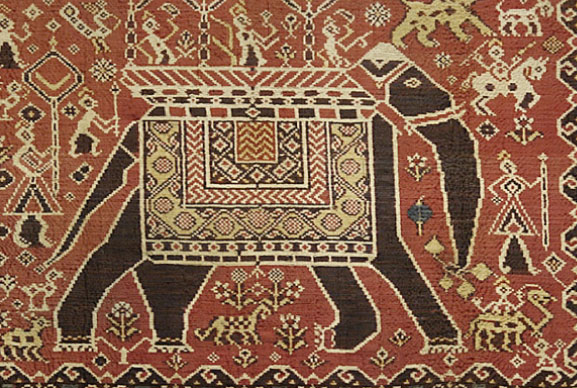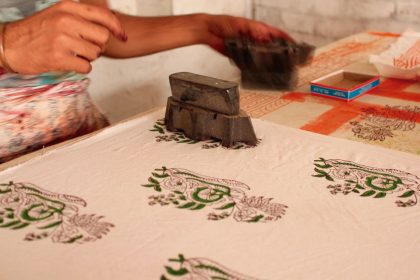

Photos taken from: Google Images, Creative Commons License
Although textile printing techniques are renewed every day, at Roopantaran today we want to highlight textile stamping with stamps, one of the oldest methods that today continues to preserve a millenary tradition full of art and aesthetics. This technique was already used in the 7th century by the Chinese and was also very popular in India, where the cotton prints that popularized this practice on the European continent come from.
Stamp printing uses blocks of wood with different shapes and carved patterns in relief that are then impregnated with dye to be applied on fabrics. In Africa, pumpkin carved stamps, used in Europe until the end of the 18th century, were popular. Today the possibilities are endless and even stamps are used that were not originally intended to print on textiles, as is the case with those made for scrapbooking, but which with the appropriate inks and procedures, are very effective when stamping on these materials.
Just let your imagination fly and choose the design you want to print and of course the fabric to be used. The stamps can be acrylic, wooden or even make custom stamps, such as those that can be made in a few minutes using eva rubber . When choosing the fabric to print, it is important to take into account some factors, especially to ensure that the pattern is not damaged when the fabric is washed. Composite textiles containing at least 50% cotton or natural fabrics are recommended.

Photos taken from: Google Images, Creative Commons License
Textile stamping with stamps is classic and has transcended time to be useful in different industries such as fashion. The steps to do so are simple and as long as they are followed properly, the results will be unbeatable.
How to Create a Cozy Boho Home This Winter with Hand Block Prints
December 19th, 2025Why Hand Block Printed Patchwork Tote Bags Are the New Everyday Essential
December 12th, 2025How to Wash and Care for Block Printed Fabrics the Right Way
November 25th, 2025